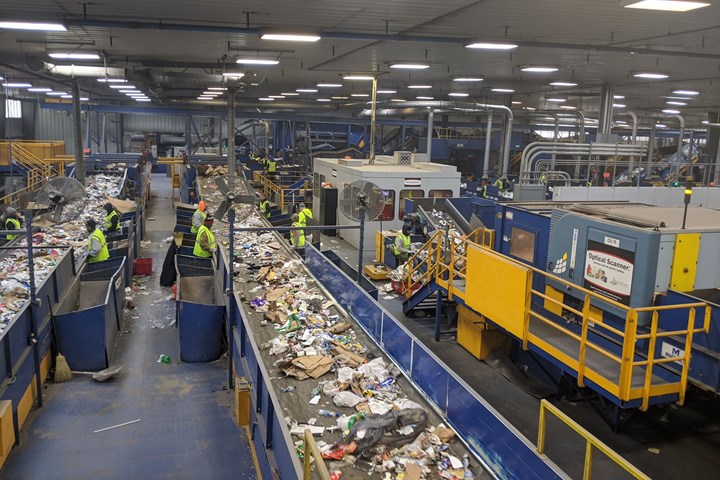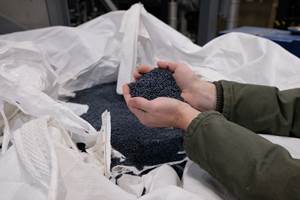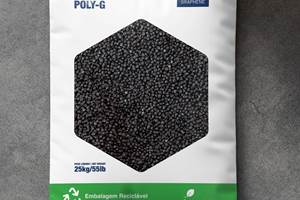Smart Systems Illuminate Material Recovery for Enhanced Plastics Recycling
Data collection and machine learning can give MRF operators and brand owners an enhanced view of the fate of recyclable materials.
Material recovery facilities (MRFs) sit at a critical juncture in the plastic material value chain. As stakeholders strive for greater material circularity, better data acquisition and feedback could reveal low-hanging fruit at the recovery stage.
Suppliers of automated and even AI-enhanced recovery systems seek to enable collaboration across the value chain, by bringing state of the art technology to MRF operations.
Better Data for MRF Operators
Operations at MRFs have long benefited from automated stations using near-infrared scanning and eddy current separation technology, but these systems are largely open-loop. To evaluate effectiveness, bale audits can be conducted periodically but require time and labor and yield only a snapshot. For more sophisticated, real-time, actionable data, some operators have turned to vision-based systems, such as RecycleOS from EverestLabs.

Workers remove unrecyclable materials by hand at an Ohio MRF.
Photo Credit: Matt Stonecash
RecycleOS is an AI software product that uses data from live camera feeds to identify and track individual items in the waste stream. Data on oversorting and undersorting of materials can be used to optimize sorting systems, including the implementation of robotics, which Everest also supplies.
“Quantifying the amount and type of plastics going to the landfill is eye opening for an (MRF) operator because they’ve never had this data available in real time before,” says JD Ambati, CEO and founder at EverestLabs.
Machine learning enables systems to get better over time, and adapt to the waste streams and operating characteristics where they are implemented, which of course vary across the country’s thousands of recycling programs.
Better Data for CPG Brands
Inventory tracking systems throughout the supply chain have given brands detailed information about exactly where and how many products are produced distributed, and sold. Marketing research reveals how customers select and utilize the products. But what happens next is a bit murkier. As recycling becomes more important, CPG brands have taken greater interest in the end of life stage for disposable products and packaging.
Brands can give their materials a better shot at being recycled by following guides, like the Association for Plastic Recycler’s design guide. But consumers and advocates for the environment have expressed dissatisfaction with materials being “recyclable” in the most literal sense, i.e., that a product could theoretically be recycled assuming its recovery and ignoring all economic and social factors. For many, a recycled material must actually be recycled to be considered sustainable, and in order to be recycled a material must first be recovered.
By connecting brands with material recovery data, EverestLabs hopes to close that information loop as well.
“We are bridging the gulf between CPG brand and the MRF, using AI and automation. Our goal is to empower everyone in the ecosystem to make data driven decisions,” says Ambati.
According to Everest, the system can recognize individual products, even distinguishing between similar containers from competing brands. Not only can producers evaluate design changes based on real-world recoverability, but they can also learn how that recoverability varies from MRF to MRF or with regional differences in waste streams.
Sharing this kind of information and visibility between organizations provides an opportunity to increase recovery and recycling, and to make verifiable sustainability claims based on real world results. It could represent a leap forward from green labeling and wishcycling strategies.
Related Content
New Facility Refreshes Post-Consumer PP by Washing Out Additives, Contaminants
PureCycle prepares to scale up its novel solvent recycling approach as new facility nears completion.
Read MoreCompatibilizers Aid Recycling & Upcycling of Mixed Resins
Compatibilizers are proving their worth in boosting critical properties such as impact/stiffness balance of PCR and PIR blends of polyolefins and other plastics.
Read MoreGerdau Graphene Launches “First” Graphene-Enhanced PE Additive Masterbatch for Extruded Packaging and More
The company has also partnered with conglomerate Sumitomo Corp. for distribution of its graphene-enhanced masterbatches in Japan.
Read MoreAt NPE2024, Follow These Megatrends in Materials and Additives
Offerings range from recycled, biobased, biodegradable and monomaterial structures that enhance recyclability to additives that are more efficient, sustainable and safer to use.
Read MoreRead Next
Recycling Partners Collaborate to Eliminate Production Scrap Waste at NPE2024
A collaboration between show organizer PLASTICS, recycler CPR and size reduction experts WEIMA and Conair will seek to recover and recycle 100% of the parts produced at the show.
Read MoreFor PLASTICS' CEO Seaholm, NPE to Shine Light on Sustainability Successes
With advocacy, communication and sustainability as three main pillars, Seaholm leads a trade association to NPE that ‘is more active today than we have ever been.’
Read MoreMaking the Circular Economy a Reality
Driven by brand owner demands and new worldwide legislation, the entire supply chain is working toward the shift to circularity, with some evidence the circular economy has already begun.
Read More















 (2).jpg;maxWidth=300;quality=90)










